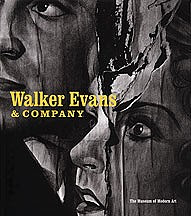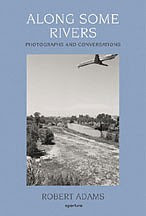



UPDATE: There's also a fun piece in jpgmag here (thanks Laura)
Thoughts on photography and what inspires it - books, poetry, film, art. And various other ramblings.




UPDATE: There's also a fun piece in jpgmag here (thanks Laura)


Detail at actual size:
Jet Trails 2007 Depicts 11,000 jet trails, equal to the number of commercial flights in the US every eight hours.
There's also an interview with Chris on PBS here
And sticking with the airliner theme the second picture is from the Guardian - Engineer's Concorde prototypes - part of an auction of all sorts of design bits and pieces and sapre parts from Concorde up for auction in Toulouse if you want to go and bid...:
Concorde, that most charismatic of all civil airliners, always did look like a paper plane. Not just any old school playground paper dart, of course, but the most beautifully thought out and most aerodynamic aircraft possible, folded by the hands of brilliant, if still unsung, backbench aero-engineers.
Now we learn that Concorde engineers really did make paper aircraft at their drawing boards and workbenches, testing these outside the former British Aircraft Corporation workshops near Bristol during their lunch hours. Made of any scrap of paper or card available, these primitive, hand-propelled Concordes did their bit in the design process of the most famous, and dynamic, airliner of all.











"The novel is a fictionalised version of the life of the New Orleans jazz pioneer Buddy Bolden. It covers the last months of Bolden's sanity in 1907, as his music becomes more radical and his behaviour more erratic. A secondary character in the story is the photographer E. J. Bellocq. Both these historical figures are portrayed in ways that draw on their actual lives, but which depart from the facts in order to explore the novel's central theme – the relationship between creativity and self destruction.
The novel draws on the style of jazz, being structured in a fragmented, and "syncopated" form, with episodes extending in elongated "riffs" before suddenly lurching unpredictably into an apparently unrelated scene. The structure also conveys Bolden's own wild, fragmenting personality, as his schizophrenia takes hold. Bolden's manic, extrovert but self-harming behaviour is set against the introverted figure of Bellocq, who expresses his own frustrated desires in his intimate erotic photographs, but then compusively violates them with scratches"

JC: After the 1970's colour "revolution" in the fine-arts community - if we want to call it that - the introduction and spread of digital photography appears to be at least equally important. I'd be curious to learn how you view the impact of digital photography.
SS: I'm going to give you a long-winded answer. I guess I see how photographers work as influenced by, among other factors, the cost of their processes. In the 1970s, when I started using 8x10 color, it cost me more than $15 every time I took a picture (film, processing, and a contact print). Simple economy lead me to only take one exposure of a subject. I knew I couldn't economize by only taking pictures that I knew would be good – that would simply lead to boring, safe images. But, I could decide what I really wanted to photograph and how I wanted to structure the picture. This was a powerful learning experience. I began to learn what I really wanted. Digital is the opposite of 8x10. I see digital as a two-sided phenomenon. The fact that pictures are free can lead to greater spontaneity. As I watch people photograph (with film), I often see a hesitation, an inhibition, in their process. I don't see this as much with digital. There seems to be a greater freedom and lack of restraint. This is analogous to how word processing affects writing: one can put thoughts down in writing, even tangential thoughts, with a minimum of inner censorship, knowing that the piece can be edited later. The other side of this lack of restraint is greater indiscriminancy. Here's a tautology: as one considers one's pictures less, one produces fewer truly considered pictures...
...JC: I was intrigued to learn that you have been producing small editions of self-published books. What is the impetus behind this?
SS: Ever since I first saw Ed Ruscha's small books in the late 1960s, I've loved artists' books. Print-on-demand technology allows me to produce books with ease. I like the basic structure of these small books: the individual images are not intended to stand alone, but are seen as a part of a complex whole. I enjoy availing myself of commonly available technology. Finally, my book project allows me to explore many different visual ideas and explore a variety of directions...
Stephen Shore very graciously agreed to share one of his iBooks, which can be downloaded here (file size: about
7.7MB).





When Albert Hastings was eighty-five years old, photographer KayLynn Deveney moved near his small flat in Wales. KayLynn took notice of the small rituals and routines—gardening, laundry, grocery shopping—that made up Bert's life. A friendship slowly developed as KayLynn began photographing parts of Bert's day. The two developed a simple yet effective method of storytelling—with KayLynn's images and Albert's handwritten text—and the project evolved into The Day-to Day Life of Albert Hastings a poignant and profound chronicle of aging, living alone, and the small things that make up our daily lives. Containing seventy-eight photographs along with poems written by Bert, his clock drawings, and personal family photographs, The Day-to-Day Life of Albert Hastings gives the reader a glimpse into one man's life, we can only imagine what stories are left untold.

...Kaylynn’s photography is warm and respectful. As photographers, some approach a subject knowing that it is full of potential to make “good pictures.” Others approach a subject because of an interest in learning something through the process of picture-making. Deveney seems intent on using the medium to bridge a generational gap and befriend her seemingly charismatic and warm neighbor. Photography may have invoked the friendship but after looking at the pictures, it seems to have taken a back seat to the importance of the relationship in both of their lives.
If it were just a book of photographs alone, we might read Mr. Hastings as simply a stand in for a representative portrait of an older Wales everyman, but through his participation in the project, by captioning the photographs, we decipher his personality due to his choice of words in describing the photographs content. They often display, not only humor, but also a directness that comments on his perception of himself and photographs.
Under one photograph of a hat he writes simply “Size 7 1/8”
Under one of him near a golden lit window he writes, “I’m not talking to a ghost, I’m opening the curtains.”... (more).






Do something old in a new way
Do something new in an old way
Do something new in a new way, Whatever works . . . works
Do it sharp, if you can’t, call it art
Do it in the computer—if it can be done there
Do fifty of them—you will definitely get a show
Do it big, if you cant do it big, do it red
If all else fails turn it upside down, if it looks good it might work... etc etc
Don’t do it about yourself—or your friend—or your family
Don’t dare photograph yourself nude
Don’t look at old family albums
Don’t hand color it
Don’t write on it... etc etc blah blah blah




One of the wonderful things about black and white photography - even when it's scanned and printed digitally - is the endless permutations of film and developer (and I know you can get Tri-X and HP5 Photoshop filters - still doesn't mean the end result looks like Tr-X or HP5 though - I haven't tested one that really does the job yet... along with the whole bunch of tools in PS CS3... ). Tri-X in Rodinal, Efke in Pyrocat HD, HP5 in DD-X, Tri-X in D23 and on it goes. Each one has it's own distinct character, look and feel. Add in expansion and contraction development (love it or hate it) and you multiply that again. The majority of digital "B&W" that I see just doesn’t come anywhere close to having these characteristics. It's simply homogenized. Which, on the whole, is rather different from most of the colour work - colour digital work can sing (as can analogue/digital hybrid colour).
Though probably the biggest single reason that so many converted colour images look crappy in greyscale is nothing to do with technique, but rather vision - on the whole, good black and white pictures simply aren't colour photographs with the colour removed.
Now maybe this will all change, but as it stands right now this is Greyscale photography, not black and white.
For Black and White photography, get a real camera and real film (scan it if you don't like darkroom chemicals) - a Leica (All Praise Ernst Leitz in the current New Yorker), a now cheap used Pentax 67 or similar, or a Linhof or Toyo - or a nice wooden thing from China and a box of Tri-X or HP5.




A couple or so more new pictures from Traces: alleyways & spandrels

“A city is nothing but streets and edifices teeming with memories, and memories are inextricably tangled up with civic and family and personal memories,” Guy Maddin






"The Muse of photography is not one of Memory's daughters, but Memory herself." John Berger
"The photograph isn't what was photographed. It's something else. It's a new fact." Gary Winogrand
"The basic material of photographs is not intrinsically beautiful. It’s not like ivory or tapestry or bronze or oil on canvas. You’re not supposed to look at the thing, you’re supposed to look through it. It’s a window.” John Szarkowski"Facts do not convey truth. That's a mistake. Facts create norms, but truth creates illumination." Werner Herzog